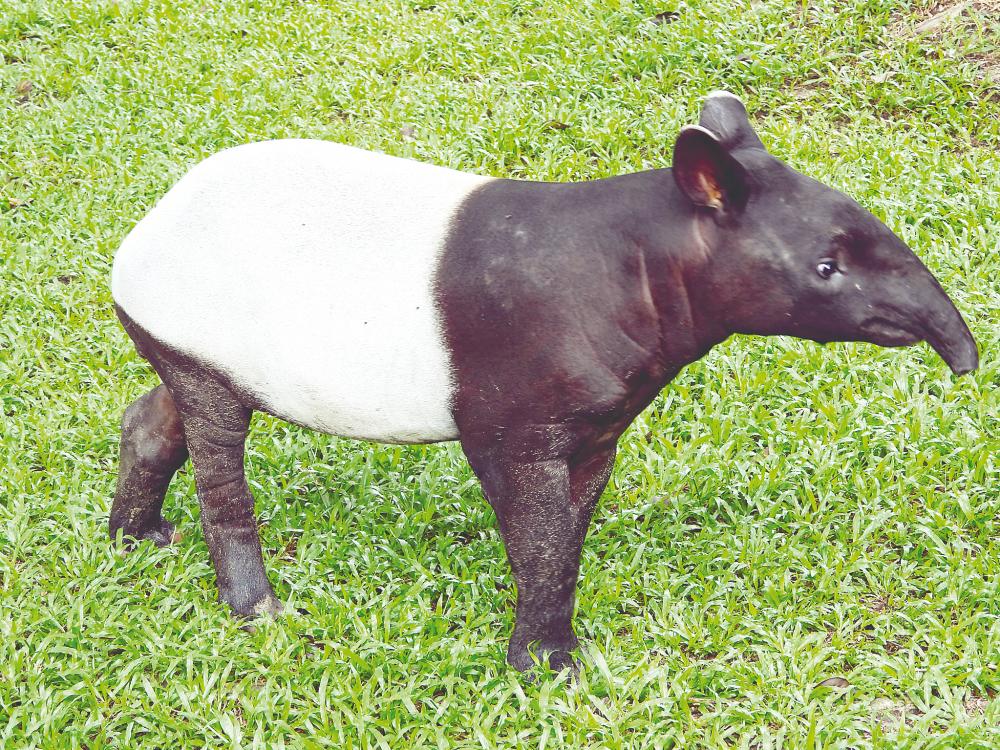PETALING JAYA: As Malaysia commemorates World Tapir Day today, the celebration is overshadowed by a grim reality – 112 Malayan tapirs, one of the country’s most iconic yet endangered species, have been killed on roads from 2020 to March 2024.
The figure, revealed by Natural Resources and Environmental Sustainability Minister Nik Nazmi Nik Ahmad, is more than just a number – it is a quiet death toll echoing through fragmented forests, where highways have become deadly frontlines.
Once roaming freely through unbroken forest, the solitary and nocturnal tapir is now increasingly forced to navigate fragmented habitats, only to fall victim to speeding vehicles on highways that dissect its home.
But beyond the bleak headlines, quiet heroes are working tirelessly to pull the species back from the edge.
At the forefront is the Malaysian Nature Society (MNS), a long-standing advocate for tapir conservation through grassroots initiatives, corporate collaboration and hands-on support for wildlife rescue efforts.
“Having the tapir as our logo is not just symbolic. It represents our commitment to its survival, from awareness campaigns to real, on-the-ground interventions,” said MNS marketing and partnerships manager Muhammad Raffi Ismail.
One of MNS’ most impactful initiatives has been addressing a shortage of tapir translocation boxes, which are essential for safely moving rescued animals from conflict zones to rehabilitation centres or forest reserves.
In response, MNS launched its “Lend Your Hand” CSR programme, rallying institutions like the French Embassy, L’Oréal, MBSB Bank and RHB Bank to sponsor these crucial relocation crates.
“Just this year, we helped Perhilitan (Wildlife and National Parks Department) secure three more translocation boxes through corporate pledges,” Raffi said.
“One of the boxes, sponsored by MBSB Bank, was used in the rescue of a trapped tapir at Bukit Kapar in Kuala Selangor. These tools make the difference between life and death,” he added.
Recognising that tapirs are selective eaters, with a study showing they consume over 217 plant species, MNS also partnered with Felda and wildlife department to establish the Tapir Food Bank.
“Healthy tapirs need greens. We focused on the top 30 preferred species identified in research, and this year, with support from the Gamuda Inspiration Award, we’re mobilising local communities to expand the food bank through tree planting efforts,” Raffi said.
However, roads remain deadly for tapirs, and Raffi pointed out a crucial but often overlooked factor.
“Tapirs are nocturnal, so many are struck at night, but drivers passing through remote forested areas often speed out of fear, whether of crime, wild animals or even superstition. This only increases the risk,” he added.
While the wildlife department has installed tapir crossing signs at known hotspots, he said change depends heavily on public mindset.
“We hope public perception will change over time. People need to realise these signs are not just for show; they’re life-saving warnings.”
On the subject of wildlife crossings, Raffi admitted they are a challenge due to cost.
“Wildlife crossings are a huge investment with low financial return. But we’re starting to see progress. The ECRL uses elevated tracks through forested areas and the West Coast Expressway has implemented some animal crossings.”
Despite the tapir’s ecological value, the species still lacks the public attention it deserves.
“The focus has largely been on tiger conservation, which is important, but it overshadows other species. Tapirs are elusive creatures, but they matter too.”
MNS is also a key player in the Malayan Tapir Conservation Action Plan 2021–2030, co-developed with the wildlife department, Universiti Putra Malaysia and the Copenhagen Zoo.
The plan outlines strategies encompassing habitat management, ex-situ care, education and research.
“With concentrated efforts from government, corporations and communities, we can rebuild the population to a healthy number,” he said.









